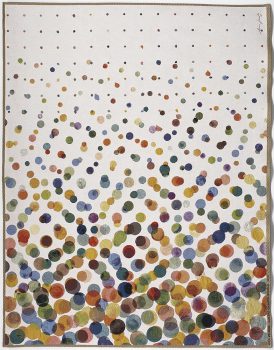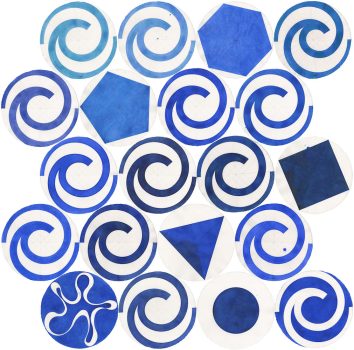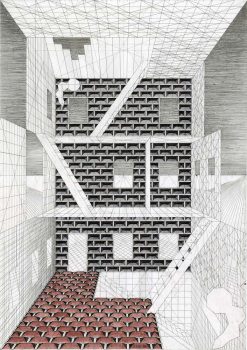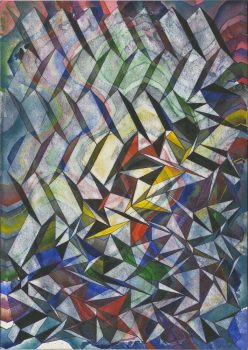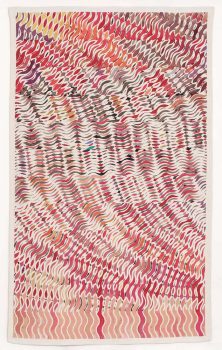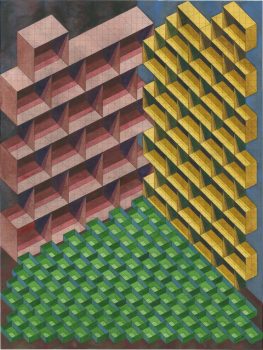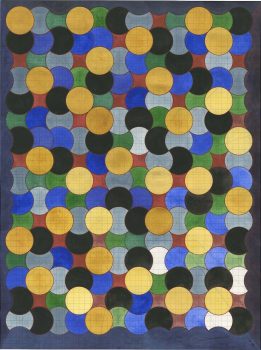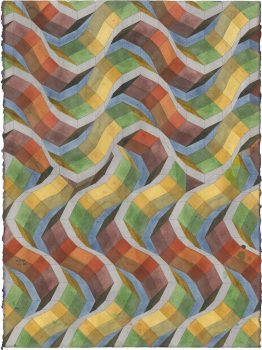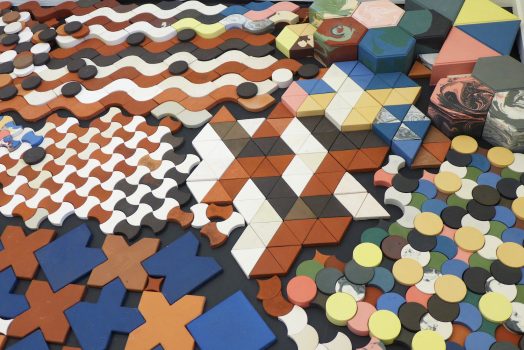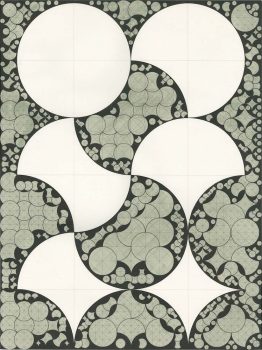GEOLOGIES
&
Plowing pleats
Henri Jacobs
drawings, work on paper
tapestries, ceramics
22 April – 04 June 2023
As a farmer’s son, Henri Jacobs (1957) often stood upside down in the sand, the poor high sandy soils of the Kempen region of North Brabant. To dig and harvest potatoes, to plant and cut asparagus, to pick Brussels sprouts. The surface therefore interests him, the horizontal surface of the landscape on which we walk, in which we plow and plant, in which we dig and trot on.
Soil, sand, earth, fields, the surface erodes, dries out, cracks, folds, subsides, impoverishes, is exhausted and tired. From this awareness of the surface, Jacobs creates paper braids from two or more sheets of colored, drawn or printed paper. These braids are assembled into a book that is presented lying down and that you leaf through. The magic of the book is the two-sidedness of each leaf, the element of recto – verso that seems so obvious but makes the leaf in the book unique. Flipping the pages is counting time, ticking away seconds, minutes, hours.
Beneath the surface that is constantly manipulated lie the geologies, lies the bed that carries the surface. Painted relief illusions of meandering folds, cracks and fissures depict the geological layers of the earth. Jacobs’ zigzag drawings are grafted onto the grid, the grid that makes the paper manageable and calms down the wind that blows. A grid gives grip, takes possession, occupies and removes the void by replacing and occupying it with subtle dots at regular intervals.
In addition to horizontality, verticality is also present in other drawings. A vertical infrastructure of stairs in empty shells of houses, from basement to attic, with window and door openings in walls as thin as paper. Empty sets where the stage is abandoned, where humans are left out. A place to stop, where storytelling has stopped.
The tapestries woven at Flanders Tapestries in Wielsbeke (B) are the oldest works in the exhibition. These jacquard-woven rugs were the result of a long process of deconstructing the painting in the early 2000s. Velázquez painted the back of the painting on the front, Mondrian destroyed the image and only painted the frame. Henri Jacobs cuts the linen into strips to weave it into a surface full of openings, so that you can see through the oil-stained canvas to the wall. Subsequently he started weaving and braiding, the paper became two sided image bearing and the surface became the object of investigation
Furthermore, the exhibition features a ceramic floor mosaic that has been slowly growing from Henri Jacobs’ working period at the European Ceramic Work Center in 2018. It consists of spatial geometric ceramic components assembled on the floor into a continuous mosaic: un tombeau pour la terre.

